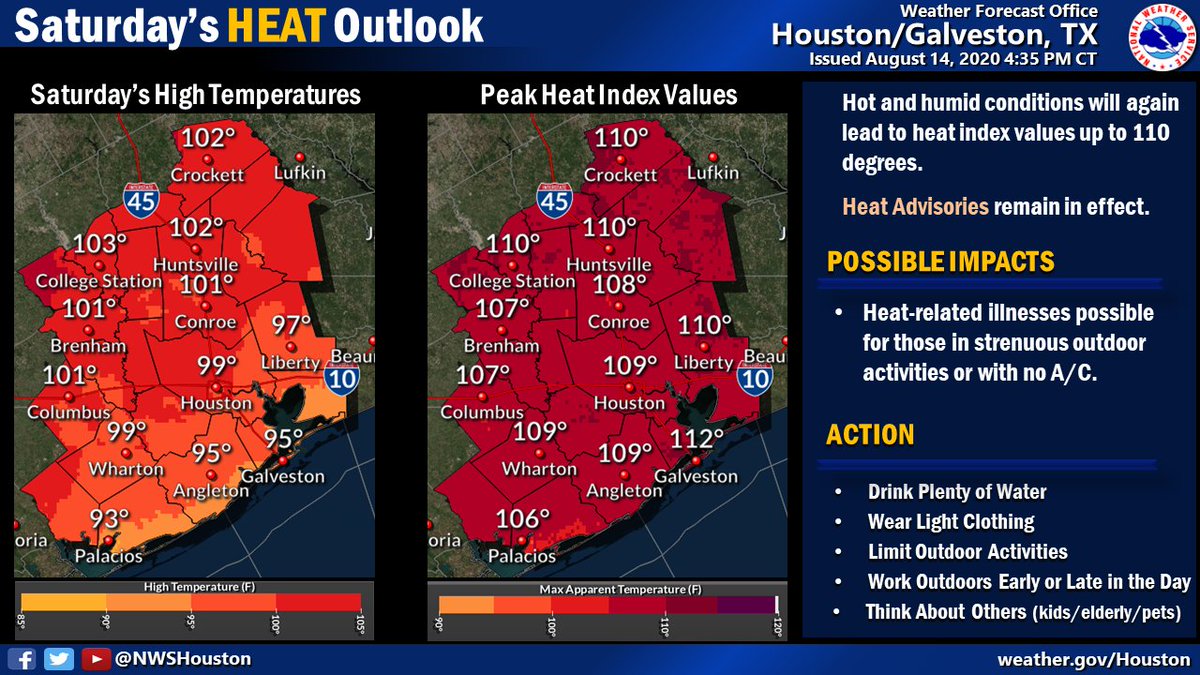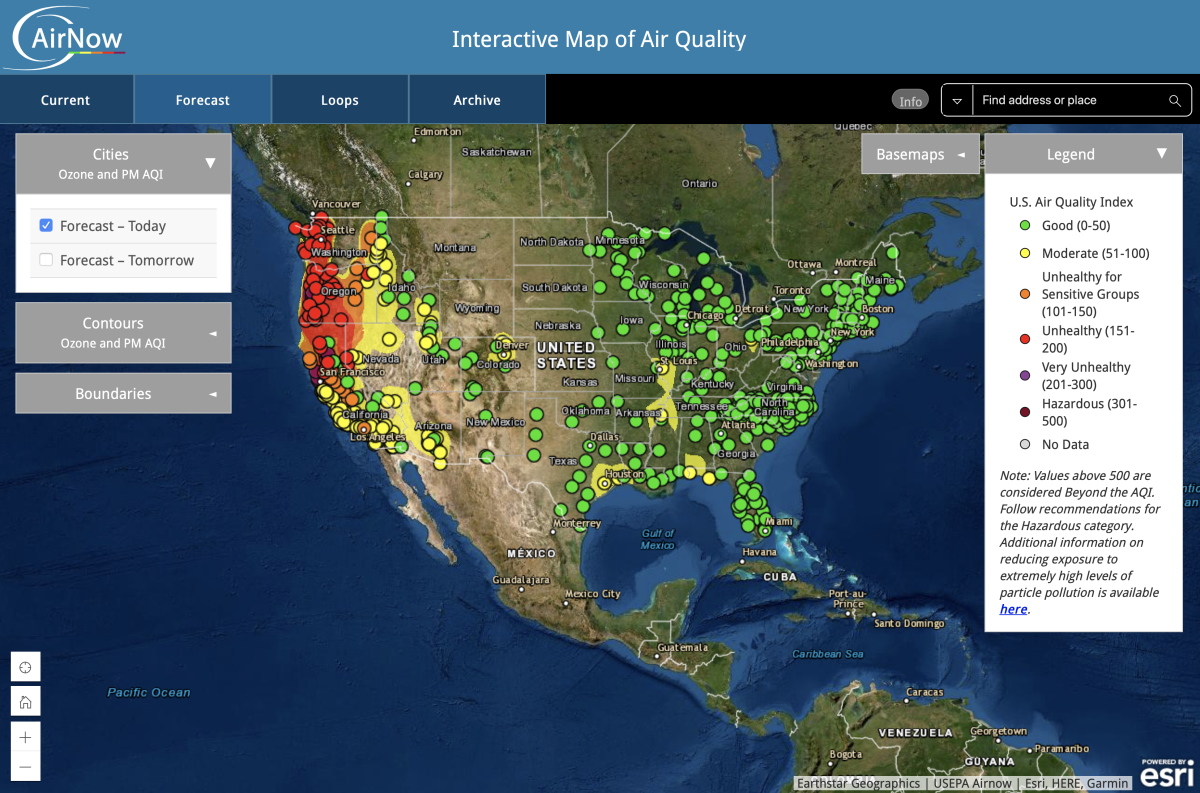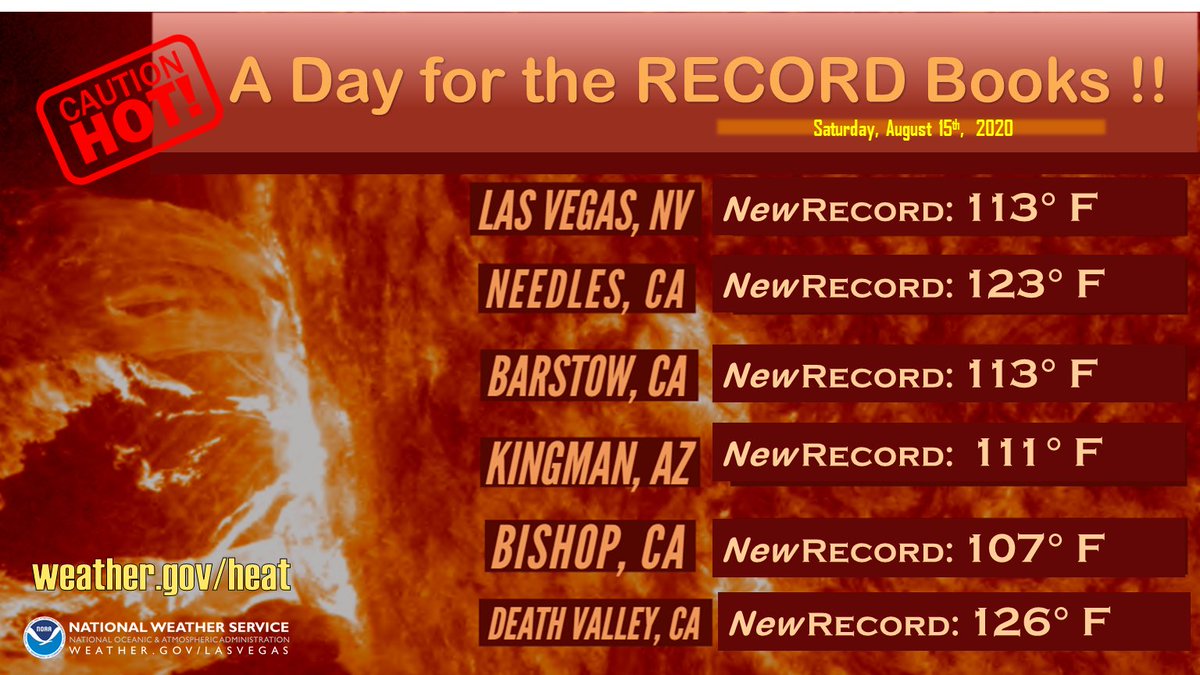
A nighttime street scene in sultry Houston, August 2016. It was a month when overnight temperatures often stayed between the upper 70s and low 80s and high humidity added to the general unpleasantness and yielded potentially dangerous heat-index readings. Daniel Lobo via flickr
Last year essentially tied with 2016 as the earth’s hottest since record-keeping started in the late 19th century.
NASA’s scientists concluded that 2020 was less than .01 degree Celsius warmer than 2016, which manmade global warming combined with an El Niño, a natural weather cycle, to make the previous warmest year on record. Three other teams of scientists – at the National Oceanic and Atmospheric Administration, the U.K.’s Met Office and Berkeley Earth – concluded that 2020 was .01 to .02 degrees C cooler than 2016.
In any event, nothing in last year’s planetary weather record prompted climate scientists to question their conclusion that pollution is heating the earth’s atmosphere with increasingly troubling effects. They included the setting of new local temperature records in many places, dangerous wildfires ranging from the Siberia to the Amazon to Australia to western North America and new evidence documenting worrisome changes in the polar regions.
On Twitter last month, climate scientist Andrew Dessler of Texas A&M University commented about the various scientific agencies’ temperature reports for 2020:
On the one hand, this is dog bites man stuff – completely unsurprising. Temperatures are warming and that will continue, and in such a world every year will be among the hottest. On the other hand, it is somewhat shocking to me how fast the warming seems to be proceeding. Just a few years after we had a record during a huge El Niño (2016), we’ve tied that record with no El Niño.

Aug. 14, 2020: The National Weather Service warned on Twitter that extremely hot and humid weather meant heat-related illnesses were a threat across the Houston region. National Weather Service
With 2020 neck and neck with 2016 as the hottest on record, the past seven years now rank as the seven hottest, with the 10 hottest occurring since 2005. Rank is assigned according to the global average temperature, which is compiled from thousands of local surface temperatures around the world.
The Houston-Galveston area was one place that set dozens of new high-temperature records last year, particularly in the category known as “high lows” – the highest overnight minimum temperatures ever recorded. That continued a Houston-region trend toward warmer overnight temperatures that TCN has reported on previously. Rising overnight temperatures, though they get less attention than things like scorching afternoon highs and more damaging droughts and hurricanes, are another manifestation of global warming that also increasingly concerns public health experts.
The National Weather Service reported that one of its four stations in the Houston-Galveston region, at Hobby Airport, registered its warmest year on record in 2020. Two of the stations, at Houston’s Bush Intercontinental Airport and Galveston, had their second-warmest years. And the monitoring site at College Station recorded its fifth-warmest year.

Houston-Galveston region’s new daily weather records in 2020. National Weather Service
The exceptional warmth was largely an overnight phenomenon. All together, the four sites set 181 new high-temperature records for different days in 2020. By far the greatest number of those records, which were set on 119 days at one or more sites, marked those locations’ highest overnight minimum temperatures – the highest lows ever recorded there.
New daytime high-temperature records were set on 59 dates at one or more sites. Only three new records were set for the lowest daytime high. And none of the sites set a record for the lowest overnight minimum temperature.
The highest overnight lows at each of the four National Weather Service sites last year were in the 80s. Galveston’s highest low reading was 87 Fahrenheit on each of the four nights from Aug. 31 through Sept. 3. The highest overnight minimum at both of the Houston sites – south of downtown at Hobby and on the far north side at Bush – was 84 F on Sept. 1. That same night, College Station had its highest overnight low reading of the year at 83 F.
The 2020 readings are part of an already noted trend. The Texas state climatologist, John Nielsen-Gammon of Texas A&M, told TCN in 2019 that “high lows are increasing in frequency in the Houston area,” evident in decades of temperature data from both Houston and Galveston.
Climate scientists have observed that an important feature of the worldwide progression toward a warmer overall atmosphere is that overnight low temperatures are rising faster than daytime highs at many locations.
For those with air-conditioned homes – most people in the Houston area and across Texas – this is not as concerning a public-health issue as at other locations that are less AC-equipped. At some such places, including London, health researchers have linked higher nighttime temperatures to a higher risk of death for vulnerable individuals with conditions including heart disease.
Increasing daytime temperatures, of course, are also being linked by scientists to a variety of harmful health effects and are being studied for their dangerous potential in coming years. Relevant research last year included these findings:
-
Extreme heat waves already rank as the top cause of weather-related deaths in the U.S. A team of researchers listed Austin among Sun Belt cities that could experience the “worst impacts” of increasing episodes of extreme heat by 2100, compared to the start of this century. The assessment combined climate, population and development trends. In a separate calculation, a meteorologist with the National Weather Service told Austin’s KUT last year that the city averaged 34 days with high temperatures of 100 F or higher in from 2001-2020, compared to an average of 12 triple-digit days per year from 1971-2000. The average for 2011-2020 was 42 days per year with a 100-plus reading.
-

This air-quality map from Sept. 11, 2020, showed that air pollution levels were soaring in many places in the western U.S. as a result of raging wildfires. Experts said extreme heat fueled by climate change was one factor in the wildfire outbreaks. The links between manmade warming of the atmosphere, greater wildfire risks and diminished air quality exemplify the many ways that researchers say climate disruption is threatening public health. AirNow.gov
Another study found that pregnant women who have been exposed to high temperatures or air pollution (which are themselves often linked in industrialized and densely populated urban areas) are likelier to have premature, underweight or stillborn babies. African-American women and children were at much higher risk. The air pollutants that were analyzed were ground-level ozone (smog) and fine particles (soot), both of which originate to differing extents, depending on various factors, from the same combustion sources – industries, vehicles and others – that produce climate-disrupting carbon dioxide. The researchers recommended that the medical community and especially women’s health specialists note these findings, relate them to patients and incorporate them in care plans.
-
Authors of two other studies concluded that global warming is pushing the planet toward conditions in some places that the human species did not evolve to endure. In one paper, researchers reported that climate models have projected the first occurrences of weather conditions at human “upper physiological limits” – specialized readings combining temperature, humidity and other factors – would happen by mid-century. Global weather station data, however, reveal that there have already been readings that high at some locations and that “extreme humid heat overall has more than doubled in frequency since 1979.” Researchers who conducted the second study wrote that “depending on scenarios of population growth and warming, over the coming 50 years, 1 to 3 billion people are projected to be left outside the climate conditions that have served humanity well over the past 6,000 years. Absent climate mitigation or migration, a substantial part of humanity will be exposed to mean annual temperatures warmer than nearly anywhere today.”
-

Some of the new high-temperature records set during 2020’s extreme heatwave in California and Nevada. National Weather Service
Another research team examined the prospects for agricultural workers, who now number about 1 million in the U.S. and are already among Americans most vulnerable to extreme heat. They reported that climate scientists’ projections indicate “the average number of days spent working in unsafe conditions will double by mid-century, and, without mitigation [reduction in climate-warming pollution], triple by the end of it. Increases in rest time and the availability of climate-controlled recovery areas can eliminate this risk but could affect farm productivity, farm worker earnings, and/or labor costs much more than alternative measures. Safeguarding the health and well-being of U.S. crop workers will therefore require systemic change beyond the worker and workplace level.”
Bill Dawson is the founding editor of Texas Climate News.
